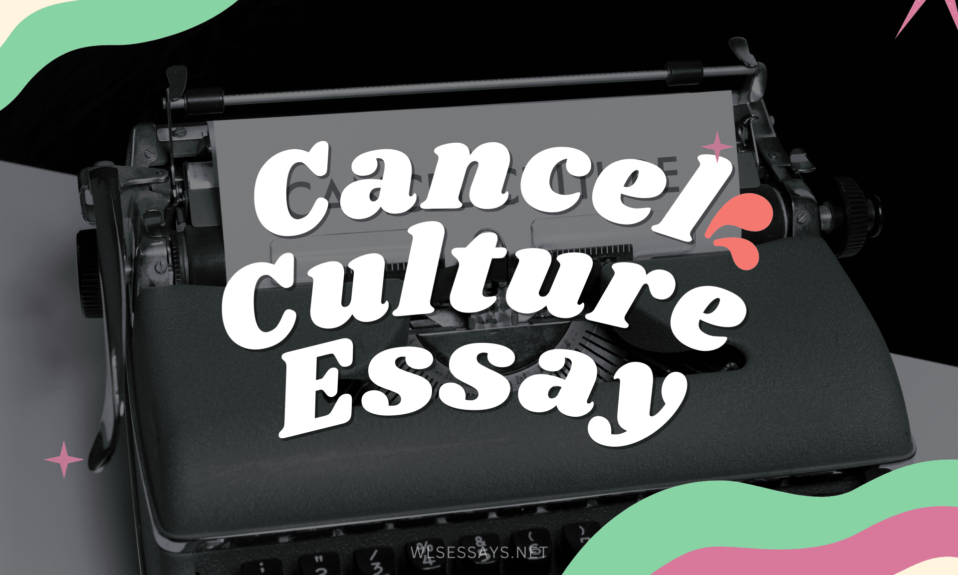Film noir is a classification of cinematic movies produced in the 1940s and 1950s, and they are characterized by their downbeat, cynical tone and visual style involving low-key lighting, shadow, and morally ambiguous characters. These movies focus mainly on the themes of crime, corruption, and the dark side of the American Dream, which is a reflection of post-war America’s anxieties and uncertainties. However, the modern neo-noir films are a classification of film noir, which mainly draws their inspiration from the classic film noir by using modern themes, style, and narrative techniques. However, these neo-noir films are usually focused on modern-day issues and reflect the development of cultural and social landscapes while at the same time retaining the theme and the distinctive visuals of the film noir. When analyzing the themes and motifs of the film noir, it is crucial to pay attention to their historical backgrounds. The social changes and the cultural shift of the post-World War II era mostly influenced the film noir. Some of the topics were the role of women in the workplace, the psychological impact of the war, racial tensions, and changes in censorship and social norms. This essay aims to analyze the connection between film noir and neo-noir by analyzing how the historical context affected these genres through the comparison of different movies, including “Alfred Hitchcock’s Vertigo,” “Jackie Brown,” “Double Indemnity,” “The Postman Always Rings Twice,” and “Out of the Past,” with “Devil in a Blue Dress.” The comparison
Historical Context
A. Women in the Workforce During WWII
The part played by women in the world of work in American society saw considerable changes during the World War II, as many of them were actively involved in work in places left by men who were away in the military. This is how film noir has represented the independence and freedom of women during this war period by the female characters in these films. In these movies, women used to be represented as femme fatales who were portrayed as alluring but, at the same time, tricky characters that would disturb the gender roles and the expectations of society. Often, these characters were depicted from a morally ambiguous position and were complex and multifaceted. It is clear that people had an issue with the changing roles of men and women in post-war America because this scene shows this. For example, the femme fatale character in “Double Indemnity”, Phyllis Dietrichson, uses the hero as her tool to kill her husband. This shows that the role of women, especially in terms of gender relations and personal independence, was transformed during World War II.
When the war ended and men returned to their homes, there was a certain backlash concerning women working out of the household, which, in the end, prompted a return to traditional gender roles. Nevertheless, the World War and the changing status of women significantly influenced film noir and, later on, neo-noir. Female figures in contemporary neo-noir films tend to be more empowered and multi-dimensional, showing that the women’s movement is ongoing and views on women’s roles are changing. Also, Daphne Monet in “Devil in a Blue Dress” is a well-developed and multifaceted character that illustrates the growing level of complexity and diversity in female characters in neo-noir movies (Kimble).
B. Post-WWII Mood
The post-war period was a time of great change and upheaval in American society and culture following the end of World War II. The conflict had a tremendous effect on the national mindset and caused feelings of frustration, worry, and insecurity. This psychological and social upheaval was reflected in the themes, mood, and narrative of film noir, which developed in response to the post-war atmosphere. The essence of classic film noir is the disillusionment and cynicism, which represent the dark aspects of the American Dream as well as the moral ambiguity of the postwar years. They often look into the topics of crime, corruption, and the dark side of society, mirroring today’s fears and uncertainties. The film noir characters are often damaged and ethically ambiguous to reflect the postwar era’s psychological complexity and moral ambiguity. For example, in “Out of the Past,” the protagonist, Jeff Bailey, is a gray man who is drawn into a spider web of crime and treachery, expressing the widespread sense of disillusionment and moral grayness of the postwar years.
As society progressed and new problems came up, neo-noir films started to deal with topical issues and depict the changing cultural and social scenery. On the one hand, neo-noir films still have film noir’s unique visual and thematic features. On the other hand, these films often employ modern subject matters and approach to present emerging socioeconomic problems and cultural transformations (David 3). These movies still investigate the dark side of the American dream, the complexity of human psychology, and the moral dilemmas of our contemporary society, providing a multifaceted and complex depiction of the human condition in the present day. For example, the film “Jackie Brown” tackles the subject of racism, crime, and moral ambiguity in modern society, which demonstrates the fact that the cultural and socioeconomic environment is changing, and the criticism of the American Dream and analysis of criminal psychology in neo-noir continues.
C. The Great Migration
One of the most significant demographic shifts in American history was the Great Migration when millions of African Americans left the rural South to settle in the urban North from 1916 to 1970. The movement aggravated racial tensions and inequalities as African Americans sought better economic conditions to get away from the South’s systemic racism and segregation. Cinema noir’s portrayal of race and ethnicity mirrored the racial problems and African Americans’ experiences during the Great Migration. Racial tensions and hurdles were either confronted or avoided in classic film noir, which mirrored popular racial sentiments and censorship at that time. Still, African American experiences and the racial dynamics during the Great Migration were sometimes shown, but in a very stereotypical and limited way, in cinema noir. For instance, the main character of “The Postman Always Rings Twice” is Cora Smith,, a white woman married to a Greek immigrant,, which indicates race and ethnicity as well as the racial tensions of the time.
With the deepening of racial consciousness and the Civil Rights Movement gaining strength, neo-noir films began to address race and ethnicity in a more direct and critical way. Neo-noir films are known for their complex and multifaceted portrayals of African Americans and racial issues of the day (Arnett 26). For instance, “Devil in a Blue Dress” dissects the lives of African Americans in postwar LA and explores issues of race, discrimination, and institutional racism. It is more direct and critical in the depiction of race and ethnicity in neo-noir (Flory 105).
D. Lifting of the Hays Code and Movement for Inclusion
The Hays Code, a set of industry standards that governed American cinema from 1930 to 1968, controlled rigorous censorship and moral standards on films, restricting the portrayal of taboos and various characters and stories. The revocation of the Hays Code and the impetus for inclusion in the late 1960s and 1970s brought about significant progress in censoring and the depiction of taboo topics, as well as the inclusion of different individuals and narratives in film noir and neo-noir. The regulation of the classic noir cinema by the Hays Code prohibited the depiction of such problematic themes as crime, violence, and sexuality, which were portrayed in a more hidden and implied way. The manner in which various people and narratives were presented was also restricted, which was in synchrony with the racial and social biases that existed at that time. For example, in “Double Indemnity,” the Hays Code did not allow the depictions of crime and sexuality, which led to less obvious and implied storylines and themes, as well as excluded different people and stories. Neo-noir movies incorporated a wider range of people and tales and concentrated on forbidden and controversial issues thanks to the progressive wave of the Hays code abolition and the inclusion movement. Neo-noir movies focus on contemporary social and cultural problems that modern society sees as more diverse and tolerant.
Themes in Film Noir and Neo-Noir
A. Critiques of the American Dream
Film noir was a matter of postwar disillusionment and the darker aspects of the American Dream, as it criticized American society’s romanticized notion of success, money, and pleasure. The classic film noir frequently includes people who are messed up by greed, ambition, and moral corruption, leading to their death and the destruction of the American Dream (Dickinson). For example, the main character of “Double Indemnity” has a greediness and desire to reach success that drives him to commit murder, which is a criticism of the American Dream and the moral decline of the postwar period. The critical analysis of the American Dream is still looked at in neo-noir films but from a more modern approach. Neo-noir movies frequently deal with the intricacies and turnabouts of the media’s portrayal of the American Dream, which reflects the new economic, social, and cultural contexts. For example, the film “Devil in a Blue Dress” is centered on the pursuit of the American dream and the fight forfor economic stability and social mobility after the Second World War,, a modern criticism of the American dream in film noir.
B. Criminal Psychology
Film noir is a genre that examines different aspects of the criminal mind and motives, and its characters are morally ambiguous, psychologically complex, and driven by greed, lust, and anxiety about existence. Classical film noir often takes us to the depths of the characters’ souls, where we are able to see their inner feelings and the grey areas of morality related to crime and corruption. To illustrate this, the main character in the film “Out of the Past,” called Jeff Bailey, is a man with no moral integrity who is involved in a web of crime and lies. The psychology of criminals is also a good example of the ethical dilemma during the postwar period. Criminal psychology and its representation in neo-noir films either change or reflect the current understanding of criminal behavior and motives. In neo-noir movies, the criminals are usually portrayed in detail, and a special focus is given to the social, psychological, and cultural factors that cause criminal behavior.
C. Evolving Gender Roles
The portrayal of women in film noir has generated a lot of disagreement and analysis, with the most common theme being the depiction of female characters as femme fatales – seductive, deceptive, and immoral characters who overturn the established gender roles and generally accepted social norms. With the help of feminine film noir, the problems and queries relevant to the changing gender relations and the growing roles of women in the post-war US are reflected. For instance, in The Postman Always Rings Twice, Cora Smith is portrayed as a typical femme fatale who can influence the protagonist, showing that women were becoming more independent during World War II. The depiction of women and gender relations in neo-noir movies develops with time, mirroring the never-ending fight for gender equality as well as the changing ideas about women’s social roles. Female characters in neo-noir films often seem to be more active and complex, breaking down the stereotypes of a particular gender and providing more thorough and multifaceted portrayals of women (Dennon 83). For instance, in “Devil in a Blue Dress,” Daphne Monet is depicted as a complex and multi-dimensional character, symbolizing female characters’ growing independence and complexity in neo-noir films.
D. Shift from Psychological to Sociological Lens
The film noir utilized the main character’s personal life and their ethical dilemma during the post war in America to focus on the psychology and philosophical issues. The classical film noir usually reflects on the post war period empirical suffering and ethical dilemma by the use of characters’ psychological complexity and moral ambiguities. For instance, “Alfred Hitchcock’s Vertigo” echoes the emphasis on person psychology and psychological problems in noir by tackling topics like obsession, identity, and existential suffering. A shift from a psychological to a sociological stance characterizes neo-noir films, which reflect a more analytical and critical outlook on the contemporary state of humanity via their exploration of larger societal issues and institutions. Contemporary society’s human condition is shown in a more complex and nuanced light in neo-noir films, which often investigate the cultural, political, and economic factors that impact people’s actions and choices.
Comparative Analysis of Selected Films
Similarities Across Film Noir and Neo-Noir
Identity, obsession, and psychological intricacies are central themes in both cinema noir and neo-noir. Alfred Hitchcock’s Vertigo dives into issues of identity and obsession through its sophisticated plot and character development (Mazey 6). Similarly, Jackie Brown delves into the characters’ psychological motives and moral issues as they traverse the criminal underworld and personal dilemmas. Double Indemnity depicts its protagonists’ psychological intricacies and moral dilemmas as they are entangled in a web of deception and criminality. The Postman Always Rings Twice delves into the inner depths of its characters and the terrible force of passion, treachery, and fate. The previous explores its characters’ psychological intricacies and moral dilemmas as they confront previous sins, treachery, and fatalism. “Devil in a Blue Dress” also touches on identity, obsession, and psychological complexities, illustrating the influence of cinema noir on neo-noir. Accordingly, identity, obsession, and psychological complications are recurring themes in both film noir and neo-noir movies that reflect the ongoing existential anxiety and moral ambiguity of these genres.
Noir and neo-noir share similarities in depicting racial tensions, criminal activity, and moral dilemmas, all of which reflect the respective historical and social contexts of the two genres. As a part of the neo-noir movement’s examination of contemporary society, Jackie Brown examines issues such as racism, crime, and moral ambiguity. Like classic noir, “The Postman Always Rings Twice and Out of the Past” use a fatalistic and ethically ambiguous tone to depict themes of desire, betrayal, and fate. In light of racial and socioeconomic shifts, Devil in a Blue Dress offers a more contemporary and critical take on postwar Los Angeles’s racial tensions, crime, and moral ambiguity (Flory 113). Therefore, cinema noir and neo-noir have a common thematic emphasis on racism, criminality, and moral ambiguity; yet, the examination of these topics becomes more complex and diverse due to changes in socio-cultural and historical contexts.
Film noir, as well as neo-noir, reject the American Dream by dealing with topics like moral degeneracy and corruption. The film Double Indemnity is a critique of the American Dream and the destructive effects of greed, ambition, and moral corruption in post-war America. Devil in a Blue Dress also criticizes the American Dream and delves into moral issues of corruption and greed, demonstrating the effect of cinema noir on neo-noir. American Dream critique, moral corruption, and greed are the central topics of both film noir and neo-noir. The main thing that these genres have in common is the moral ambiguity and the disillusionment.
Desire, infidelity, and destiny are the common themes in film noir and neo-noir, which show the genre’s fatalistic and morally complex nature. The Postman Always Rings Twice examines the destructive power of desire and the immutability of fate in the USA after the war. The author changes his topic from the tragic consequences of sins and betrayals of the past to hope for the future of postwar America. Devil in a Blue Dress, the movie, addresses themes of love, betrayal, and destiny, revealing the way in which noir films influence neo-noir. Therefore, the investigation of desire, treason, and fate is a typical topic of film noir and neo-noir, which is associated with fatalism and moral ambivalence in these genres.
Differences Between Film Noir and Neo-Noir
One of the main distinctions between film noir and neo-noir is the narrative style and angle through which the subjects are viewed. Alfred Hitchcock’s Vertigo concentrates on the characters’ identities, obsessions, and psychological intricacies by giving insights into their interior struggles and existential dilemmas. Double Indemnity depicts the characters’ psychological intricacies and moral ambiguities more psychologically and existentially, highlighting the mental battles and moral quandaries they encounter. Jackie Brown and The Postman Always Rings Twice take a more social and critical approach to themes of racism, criminality, and moral ambiguity, showing a change from a psychological to a sociological viewpoint by investigating wider societal concerns and systems (Thies 2). Out of the Past explores its characters’ psychological intricacies and moral difficulties in a broader psychological and existential context. Demonstrating the influence of film noir on neo-noir and the growing narrative techniques and subjects explored by neo-noir, Devil in a Blue Dress differentiates itself by moving from a psychological to a sociological perspective, exploring broader societal issues and systems.
The depiction of changing gender roles is another aspect where neo-noir and film noir vary. The portrayal of a dynamic and multi-faceted women is enhanced in Devil in a Blue Dress. To that end, they are always coming up with new and varied representations of women. As the driving force behind the neo-noir and an illustration to the power of complex female characters, Jackie Brown challenges established gender norms and prejudices. However, the complex and powerful female characters in Devil in a Blue Dress represent the evolving representation of gender roles in modern cinema and the increasing importance of strong female characters in neo-noir films.
What characterizes modern noir from film noir is the prevalence of racism and racial tension. The Devil in a Blue Dress demonstrates that neo-noir is becoming more nuanced and skeptical of prejudice and race discrimination by concentrating on contemporary racial tensions and racism. Racism, discrimination, and institutional racism are some of the big challenges faced by Black Los Angeles residents following WW II, as depicted in the film The Devil in a Blue Dress. As a product of cultural and societal shifts, neo-noir takes a harder stance in its critiques of race and ethnicity.
Works Cited
Arnett, Robert. “Transitional Noir, 1960s–Early 1970s.” Neo-Noir as Post-Classical Hollywood Cinema, 2020, pp. 23–43.
David, Vanden B. “Looking for low-key: Noir and Neo-Noir from a cinematographic perspective.” Journal of Media and Communication Studies, vol. 15, no. 1, 2023, pp. 1–12.
Dennon, Anne. “The Emergence of the Feminist Fatale in American Film Noir.” Central Washington University, 2015, pp. 1–92.
Dickieson, Brenton. “The Fine Lines Between Mind Reader and Geek”: Thoughts on Nightmare Alley, Film Noir, and the American Dream by Mark Osteen (Nightmare Alley Series).” A Pilgrim in Narnia – a Journey Through the Imaginative Worlds of C.S. Lewis, J.R.R. Tolkien, and the Inklings, 7 Jan. 2022, apilgriminnarnia.com/2022/01/06/osteen-nightmare-alley-series/.
Flory, Dan. “Disgust, Race, and Ideology in Carl Franklin’sDevil in a Blue Dress.” Film-Philosophy, vol. 26, no. 2, 2022, pp. 103–129.
Hasan, H. “The lethal film noir femme fatale: A precursor to bond girls in James Bond films.” Journal of Women Empowerment and Studies, no. 21, 2021, pp. 21–25, doi:10.55529/jwes.21.21.25.
Kimble, Julian. “The Black Neo-noirs of the ’90s.” The Ringer, 29 Dec. 2021, www.theringer.com/movies/2021/12/29/22851951/black-neo-noirs-1990s-deep-cover-devil-blue-dress.
Mazey, Lisa V. “The Danger of Obsession: Questions of Power and Freedom in Alfred Hitchcock’s Vertigo.” Cinematic Women, From Objecthood to Heroism: Essays on Female Gender Representation in Western Screens and TV Productions, pp. 3–17.
O’Callaghan, Paul. “Where to Begin with Neo-noir.” BFI, 26 Jan. 2016, www.bfi.org.uk/features/where-begin-neo-noir.
Thies, Henning. “Cain, James Mallahan: The Postman Always Rings Twice.” Kindlers Literatur Lexikon (KLL), 2020, pp. 1-2.










